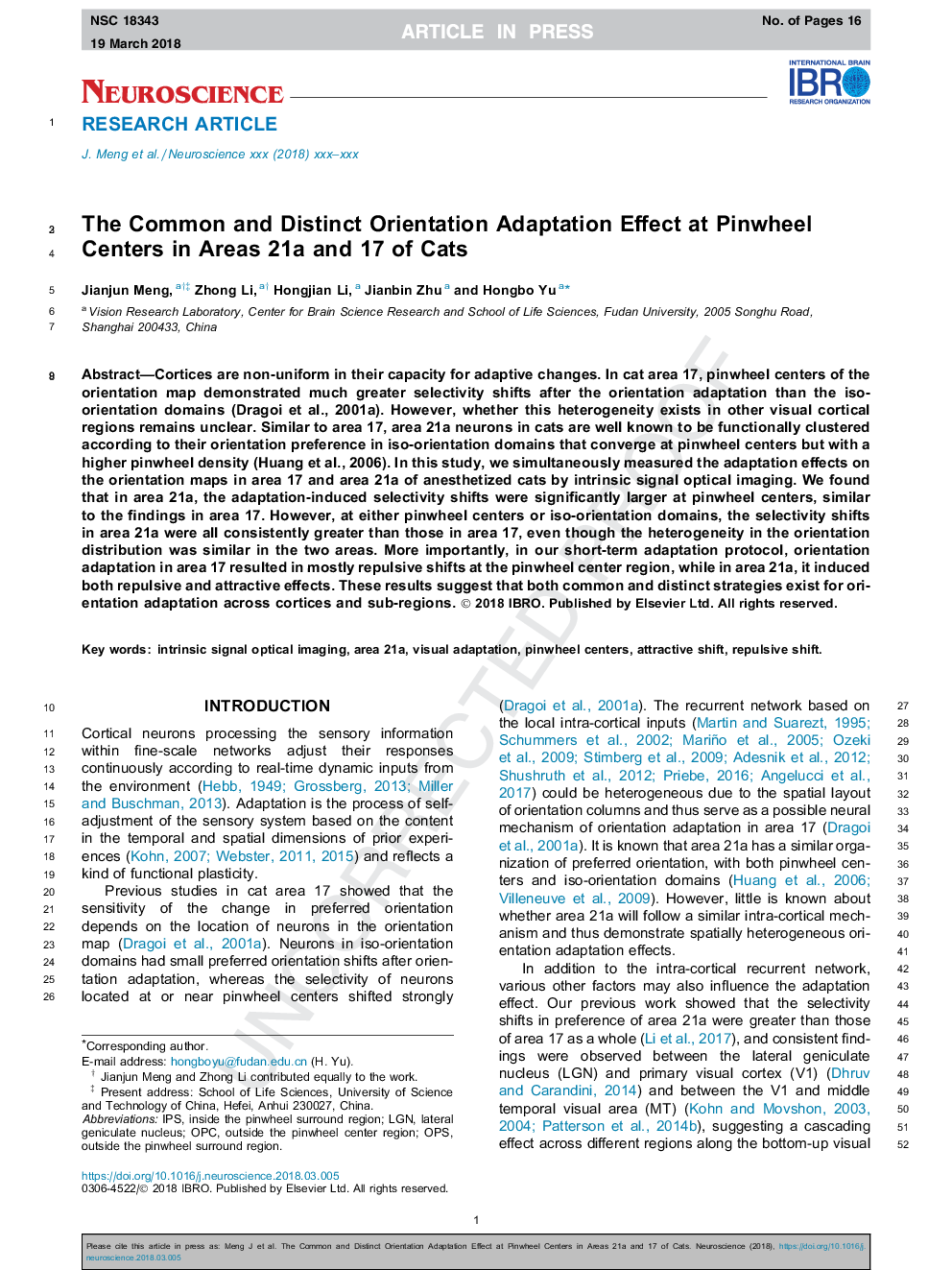| Article ID | Journal | Published Year | Pages | File Type |
|---|---|---|---|---|
| 8840788 | Neuroscience | 2018 | 16 Pages |
Abstract
Cortices are non-uniform in their capacity for adaptive changes. In cat area 17, pinwheel centers of the orientation map demonstrated much greater selectivity shifts after the orientation adaptation than the iso-orientation domains (Dragoi et al., 2001a). However, whether this heterogeneity exists in other visual cortical regions remains unclear. Similar to area 17, area 21a neurons in cats are well known to be functionally clustered according to their orientation preference in iso-orientation domains that converge at pinwheel centers but with a higher pinwheel density (Huang et al., 2006). In this study, we simultaneously measured the adaptation effects on the orientation maps in area 17 and area 21a of anesthetized cats by intrinsic signal optical imaging. We found that in area 21a, the adaptation-induced selectivity shifts were significantly larger at pinwheel centers, similar to the findings in area 17. However, at either pinwheel centers or iso-orientation domains, the selectivity shifts in area 21a were all consistently greater than those in area 17, even though the heterogeneity in the orientation distribution was similar in the two areas. More importantly, in our short-term adaptation protocol, orientation adaptation in area 17 resulted in mostly repulsive shifts at the pinwheel center region, while in area 21a, it induced both repulsive and attractive effects. These results suggest that both common and distinct strategies exist for orientation adaptation across cortices and sub-regions.
Related Topics
Life Sciences
Neuroscience
Neuroscience (General)
Authors
Jianjun Meng, Zhong Li, Hongjian Li, Jianbin Zhu, Hongbo Yu,
